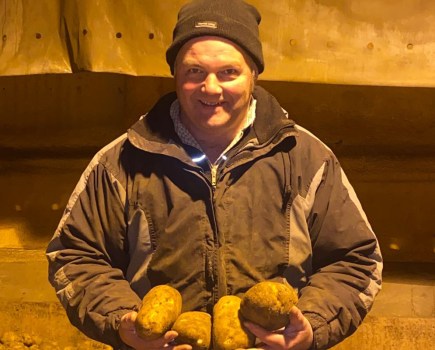When you start notching up enough harvests as a farmer to make it equivalent to a decent innings on the cricket pitch, then they can start to blur and become forgotten.
 But there are still some that stay in the mind like a sweetly hit six – 1984 where even the badly established weedy crops of wheat seemed to do four tonne to the acre (10t/ha). Then there was the bitter-sweetness of 2008 which was a combination of bumper yields, wet weather and crashing prices – a bit like a sweet cover drive that suddenly gets fielded as you are between the wickets.
But there are still some that stay in the mind like a sweetly hit six – 1984 where even the badly established weedy crops of wheat seemed to do four tonne to the acre (10t/ha). Then there was the bitter-sweetness of 2008 which was a combination of bumper yields, wet weather and crashing prices – a bit like a sweet cover drive that suddenly gets fielded as you are between the wickets.
Then there were the ducks, like 2012 which proved a wash-out that reduced the hardest of arable men to tears. Another harvest of note was the infamous drought year of 1976. I was only a school boy at the time, but I can remember Dad’s frustration how the lack of rain had left him with half a harvest.
I suspect 2018 will become another remembered harvest. The absence of rain in June and July coupled with hot sunny days left many of us feeling we were suddenly farming in a Mediterranean clime. The key difference between the drought of 1976 and the one in 2018 was that 1976 followed on from a droughty year in 1975 in contrast to this year which comes on the back of wet weather. For us it seems the moisture deep in the subsoil has saved us from widespread 1976 yields. I hope yours proves much the same.
No smoke without fire
The first field we cleared this harvest of both its grain and straw was a field we call Smokey. In an exceptionally hot dry year where fire risk was at the forefront of many of our minds, having a field called Smokey seems to be tempting fate. Indeed the field adjoins a run of back gardens where it’s not unknown for garden bonfires to be started on our side of the fence.
The considerably increased fire risk this year has put us on a greater level of alert. We are discing breaks round most fields the moment the combine leaves the field and every machine involved in the harvest campaign carries a fire extinguisher. I’m also having friendly chats with non-farming neighbours about the need for everyone to be more vigilant.

Smokey may be a jarring field name to have in such a tinder-dry year, but has yielded OK.
But despite all this, research shows that the origin of this odd field name of Smokey is nothing to do with combustibility but rather from ‘Smock’ which is an old word for the Church tithe which was the bane of many a farmer until the 1920s.
It’s a bit of a barometer field for me as it has rank clay at the bottom with gravel at the top and a nice rich loam in between. As such it gives an indication of how crops different soil types are going to perform for the coming harvest. So this year Smokey did OK – yields from the six-row barley variety Volume were better than we expected albeit we weren’t expecting much.
There are other reasons why this field has special place in my heart, one is that it has nice views over St. Osyth creek and the old village harbour, not to mention the old priory. It was also Dad’s favourite field and when I’m sitting in the combine cab fond memories of my late father return. I’m not sure whether they get CPM magazine in Heaven but if they do I’m keen to report to the dear departed that we are still looking after Smokey and Smokey is still looking after us.
(A brief reminder to all past readers, whether in this world or the next, it’s simple to get yourself reinstated and continue receiving CPM – just go to www.cpm-magazine.co.uk/subscribe/)
Guy Smith grows 500ha of combinable crops on the north east Essex coast. @EssexPeasant




